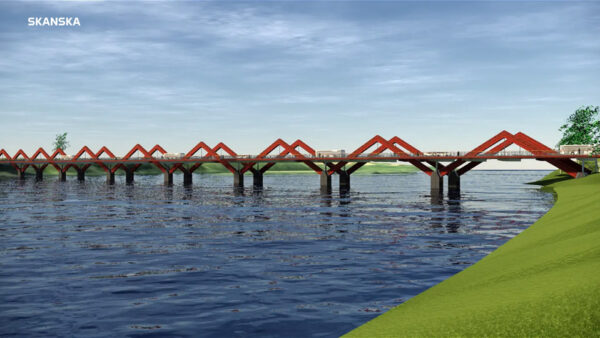Migrant workers toiling in the searing heat of Qatar to build stadiums for the World Cup should be allowed to slow their pace dramatically and spend two-thirds of their shifts on breaks, according to a seminal new study that has revealed the effectiveness of basic heat-strain prevention measures.
Workers should also have water delivered to them once an hour, and be issued white coveralls or other specially designed clothing, the study said.
Amid claims that Qatar’s heat-death toll is grossly under-reported, researchers from the FAME laboratory at the University of Thessaly conducted tests among workers at the 40,000-capacity Al Rayyan stadium under construction outside Doha.
Scientists closely monitored 125 workers using various aspects of a “heat stress management plan” over 5,500 hours, in a study commissioned by the International Labour Organisation (ILO) and Qatari government authorities.
The ILO hailed it as the largest ever study of its kind, and the first in the region, and said it would now press the Qatari government to make the recommendations law.
Qatar has been criticised for not investigating deaths by apparently natural causes among young and healthy migrant workers, and a study in July concluded that hundreds of Nepalese workers classed as having died from “cardiac arrest” were actually victims of preventable heat strain.
FAME researchers studied the effectiveness of four interventions compared to a “business-as-usual” approach. They were:
- Managed hydration, where 750ml of water was brought to workers every hour;
- Providing heat-busting clothing such as white coveralls;
- Letting workers go at their own pace; and 4) giving them more breaks.
The findings showed that the core body temperature of workers following one or a combination of the measures broke the safety threshold of 38 degrees C during only zero to 3% of their shift’s duration, as opposed to 5% of a shift’s duration in a business-as-usual scenario.
Fatal body tissue damage and central nervous system impairment can result if a worker’s temperature exceeds safe limits for too long.
In the study, workers were on breaks for around 60% of their shifts and, for around 30% of their shifts, the work they did was carried out at “low intensity”.
“One of the key reasons why workers on the World Cup site were at low risk to occupational heat strain, was because they were empowered to self-pace and take breaks,” said Dr. Andreas Flouris, head of the FAME Laboratory. “This was a key element of the heat mitigation plan, and was how workers were able to cope with the heat and humidity.”
Around 30% of workers were found to be arriving at their shifts already dehydrated.

Make it law
Researchers noted that the improvements in core body temperature were achieved even though the construction site studied already had a comprehensive heat stress management plan in place, including the provision of shaded areas and water stations.
Armed with this new data, the ILO, which advises Qatar’s labour ministry and its Supreme Committee for delivering the World Cup, said it would press the government to turn the study’s recommendations into law.
“We are working with the Government to translate the recommendations of this study into improved legislation, and to promote the replication of the good practices that were identified,” said Houtan Homayounpour, Head of the ILO Project Office in Doha. “We have a scientific basis on which to propose adjustments to the prohibited working hours during summer, and it is clear that heat stress mitigation plans must recognise the right and enhance the ability of workers to self-pace.”
Meanwhile, the Supreme Committee has spent two years developing a cooling work suit which is being rolled out to all workers at World Cup sites, comprised of a jersey and trousers made of light, breathable material. The authorities claim it uses the fabric and perspiration to naturally cool the body. The FAME study found the suit effective.
FAME also tested cooling vests equipped with solar-powered fans, but said its evaluation did not support their wider use.
Anthony Harwood is a former foreign editor of the Daily Mail
Image: Construction workers in Doha, Qatar (Adam Jones/CC BY-SA 2.0)
Comments
Comments are closed.











It is clear that there must be a humane regime put in place to reflect that of nations who are largely on top of risk management. There must be an elimination, however, of safety-choking competitive tendering so that staff are not the ones who suffer, and there needs to be a more effective means of ensuring that a duty of care exists and is aptly facilitated/honoured.
Whilst it is a noble effort to ensure ‘clothing technology’ is a core part of keeping workers cool, the reality is that there must be a common-sense regime involving slowing works down, ensuring that water is readily available (not just per hour), and that workers are empowered to have those ‘five minute blows’ when they need them, not when they are allowed to have them. There needs to be appropriate shaded areas provided both ‘on the job’ and away from the site, and the kudos of the World Cup cannot be an excuse for negligence.